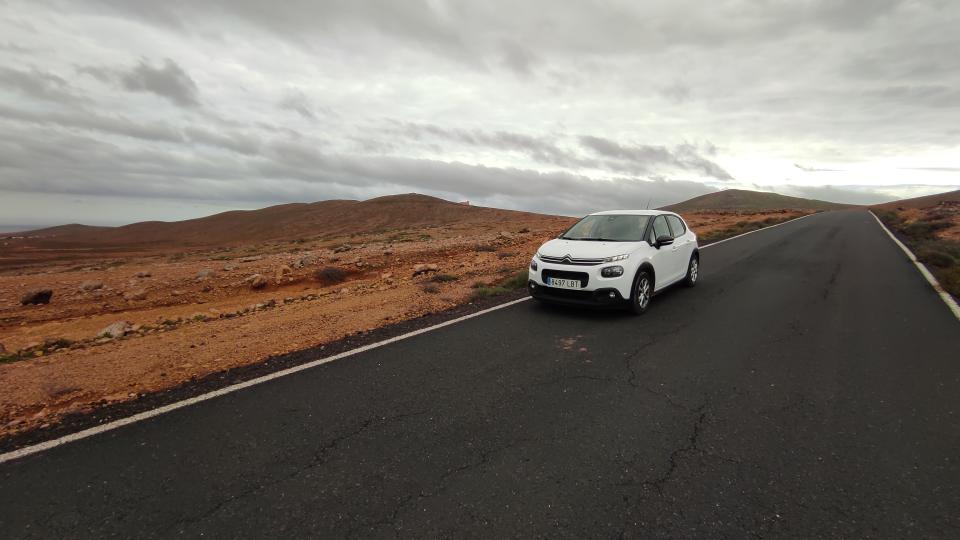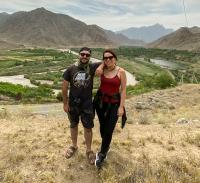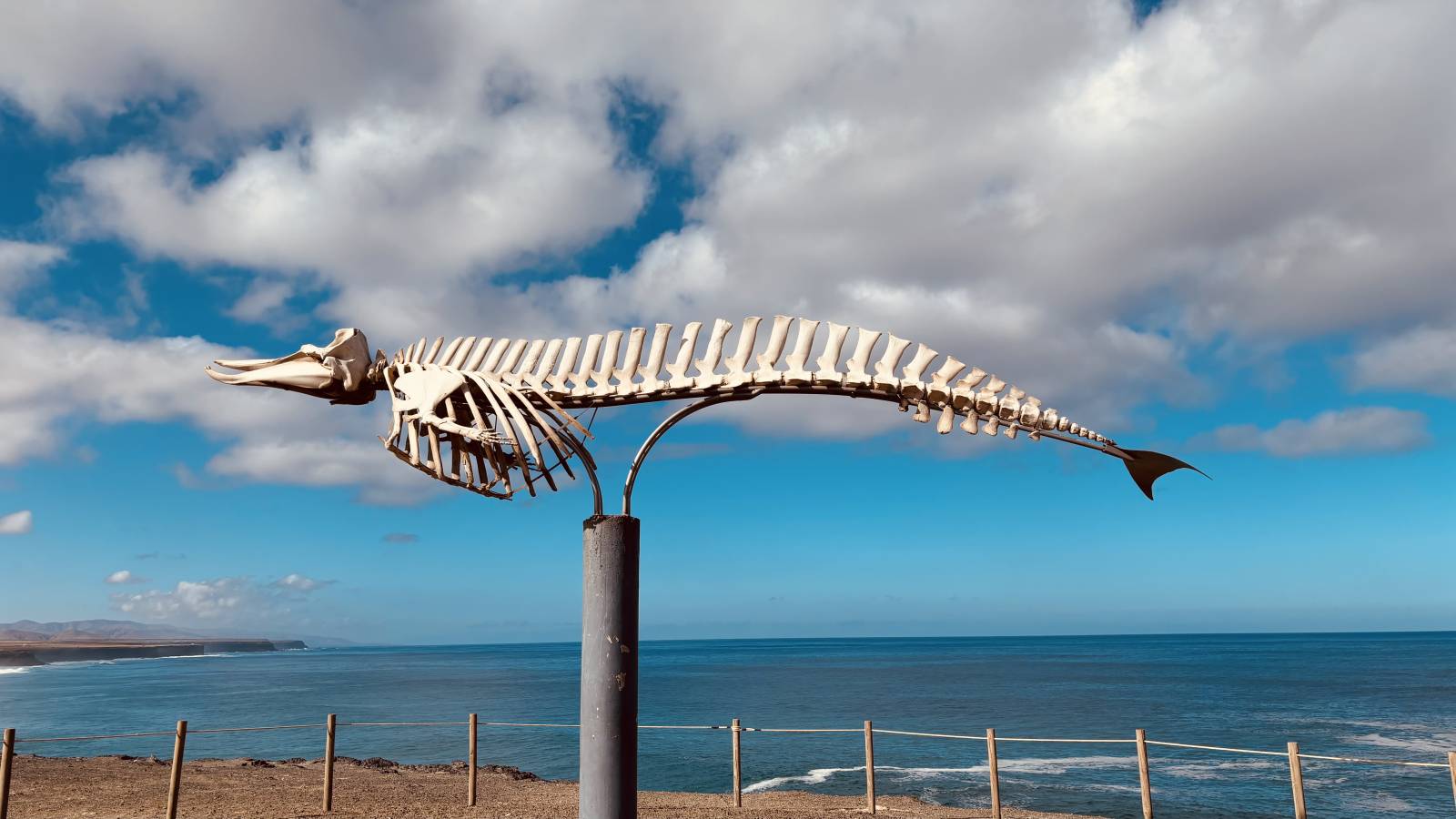Car Rental in Fuerteventura
- Search, Compare, and Save up to 70%!Cheapest car rental rates




Most popular car rental deals




Travel information
Why rent a car in Fuerteventura?
Fuerteventura is a great place to explore. Although the island is not large, it has a variety of beaches from family-friendly areas with sandy shores and calm waters to black pebble beaches and some of the windiest surfing spots in Europe. There are plenty of all-inclusive tourist resorts, but getting your own ride will give you the opportunity to also travel to otherwise inaccessible local villages and to explore the mountainous inland areas of the island.

One-way car rentals in Fuerteventura
The most popular one-way rental options for pick up in Fuerteventura and drop off in another city include:
- From Fuerteventura to Lanzarote - 28 offers from $22.38 per day
- From Fuerteventura to Tenerife - 15 offers from $35.54 per day
Top ways to enter Fuerteventura
- Fuerteventura Airport: Also known as El Matorral, the island’s only airport serves more than 6 million travelers every year. It has flights by more than 30 different airlines, including some low-cost companies. The airport is located just 5km (3 miles) southwest of the island’s capital, Puerto del Rosario, and can be reached in 5 to 10 minutes.
- Lanzarote Airport: Located on the nearest island to Fuerteventura, César Manrique-Lanzarote Airport hosts flights to and from many destinations on mainland Spain and in the rest of Europe. The airport is located near Lanzarote’s capital, Arrecife, and there are also good connections to the island’s ports.
- Gran Canaria Airport: The busiest airport in the Canary Islands and the sixth-busiest in Spain, Gran Canaria Airport handled 13.5 million travelers in 2018. The airport is a hub for 4 different airlines, including low-cost carriers Vueling and Norwegian Air, and is served by tens of others.
- Tenerife North Airport: Formerly known as Tenerife North-Los Rodeos, the airport is located near Tenerife’s capital, Santa Cruz. One of the fastest-growing airports in Spain, it handled 5.8 million travelers in 2019.
- Tenerife South Airport: The busiest of the two airports on Tenerife, it hosts direct flights to and from such varied destinations as the United Kingdom, France, Italy, Germany as well as Russia, Romania, and Iceland.
It is easy to reach Fuerteventura from the neighboring islands, especially Tenerife and Lanzarote, as there is a frequent ferry service to and from all of them (although you should check the schedules beforehand as the service is more active during the tourist season). Nevertheless, ask your rental car provider if they permit you taking a rental car on a ferry and whether it’s possible to pick up a rental car on one island and then drop it off on another - some providers permit that while others don’t. Another option is to fly to a neighboring island, take a ferry to Fuerteventura from there, and pick up a rental after arriving in Fuerteventura.
City facts
- Fuerteventura enjoys an arid-subtropical climate with hot summers, warm winters, and small temperature changes throughout the year. The average temperature is 25 °C (76°F) in August, the warmest month, and 18°C (64°F) in January, the coldest. Even drier than the rest of the Canary Islands, Fuerteventura has virtually no precipitation from early May to mid-October. Located near the Western coast of Africa and the Sahara Desert, Fuerteventura can sometimes experience a type of sandstorm called Calima.
- The entire island of Fuerteventura has been declared a UNESCO Biosphere Reserve. There are numerous protected areas on the island, and it is a home for such unique and endangered species as the Canarian Egyptian vulture, Barbary ground squirrel, and Eurasian collared dove. Fuerteventura is also the oldest of the Canary Islands, created by a volcanic eruption about 20 million years ago. The last time Fuerteventura’s volcanoes erupted was around 4,000 years ago.
- Visited by Phoenician seafarers as early as the 11th century BC, Fuerteventura was for centuries inhabited by the Guanche, the native people of the Canary Islands who were related to the Berbers of Morocco and Algeria. Europeans first arrived in 1340 and invaded the island in 1405. The Guanche language went extinct in the 17th century but their heritage survives in certain traditions, legends, and some loan words of Canarian Spanish that aren’t used in mainland Spain.
Top sights and activities
- Puerto del Rosario. The capital city is a calm and relaxed place, very different from the large Canarian cities like Las Palmas and Santa Cruz on other islands. Landmarks include the beautiful Nuestra Señora del Rosario church and a sculpture of a goat family in front of it (Puerto del Rosario used to be named Puerto des Cabras of ‘Port of Goats’). There are also some very nice beaches near the city, chiefly Playa Chica, Playa Blanca, and Playa del Matorral.
- Ajuy. A serene fishing village on the west coast of the island, Ajuy is famous for its beach of black sands and for the dramatic Ajuy caves that are located near the coast. The waters near Ajuy are generally considered too dangerous to swim in, but the views offered are still amazing. Some of the best seafood on the island can also be enjoyed in one of its small local restaurants.
- Corralejo. A town in the northernmost part of Fuerteventura, Corralejo has some of the most beautiful beaches on the island. There’s a wealth to choose from, too, from rocky and rugged coastline north of town to pure white shores south of it. More than just a pleasure to the eye, Corralejo’s waves also offer some of the best kite-surfing in Europe, with plenty of shops providing equipment and instructors. Near Corralejo lies the old volcano Calderon Hondo, with great hiking trails, or the amazing Corralejo Nature Preserve.
- Taste the local food. As Fuerteventura is an island, it has some great seafood options. Fish is often served in a stew or with potatoes or grains. Goats are abundant here, which provides for some great goat-milk cheeses. Another dish Fuerteventura is known for is its delicious goat stew.
- For other things to see and do on the island, check out this guide to Fuerteventura.
Traffic and parking
- Speed limits - 50km/h (31mph) in built-up areas, 90km/h (56mph) on most standard roads, 100km/h (62mph) on standard roads that are either one-way roads, roads with more than two lanes for at least one direction of traffic and roads with shoulders more than 1.5m wide, and 120km/h (74mph) on motorways (called autovías in Spain).
- The car’s documentation and proof of insurance must be inside the vehicle at all times.
- The driver and all passengers are required to wear seatbelts.
- Children up to the age of 12 and measuring less than 135cm travelling in the front seat of a car must be seated in a child restraint system adapted to their size and weight.
- Unnecessary use of audible warning devices (horns) is prohibited.
- The legal alcohol limit is 0.05% for experienced drivers and 0.02% for novice drivers.
- The emergency number is 112.
Toll roads
Most of the roads in Spain are toll-free. Toll roads are called ‘carretera de peaje’. On maps and road signs, all toll roads have to include a letter P after the road type. The payment method may vary depending on the road, but most will accept cash. Regardless of the region, the average estimated price is €9.5 ($11.25) per 100km by car. See the official website for prices and more information.
Ideas for day trips
- Cofete. A village on the southwest edge of the island, Cofete is one of the least-discovered spots in the Canary Islands. Its remoteness might have something to do with the fact that it was a militarized restricted zone until the 1970s. Nowadays, the area that is famous for the stunning Villa Winter is a place of pristine and hauntingly remote beaches that get almost no visitors. The village, located 110km (68 miles) south of Puerto del Rosario, cannot be reached by public transportation, but if you go with a rental car, the distance can be traveled in about two hours.
- Sand Dune National Park. Bordering the town of Corralejo, the national park was created to protect the impressive, desert-like dunes characteristic of the island. Even though you’ll always be near the ocean, walking through the park can feel like being on another planet, or at least in the Sahara Desert. Roam around long enough and you might find some truly spectacular beaches with turquoise blue water that are inaccessible from anywhere else. The national park is about 24km (15 miles) north of Corralejo and can be reached by car in 25 minutes.
- Costa Calma. As suggested by its name, this is one of the most peaceful and laid back beach settlements on Fuerteventura. Located on the southeastern coast of the island, about an hour’s drive from Puerto del Rosario, the town has both sandy beaches that are more popular with swimmers and sunbathers and more rocky ones that attract many lovers of water sports.
- Lobos Island. An uninhabited island near the northeastern coast of Fuerteventura, its name means ‘Island of the Wolves’. However, it was not canines, but rather the Mediterranean monk seals that gave the island its name. Also known as ‘Sea wolves,’ they once had a colony there. Nowadays, the island is an oasis of unspoilt nature and also has an old lighthouse that offers stunning views including some of neighboring Lanzarote. The island is just a 15-minute ferry ride away from Corralejo and the boats have transparent glass bottoms (if you’re lucky, you might get to spot some of the unique fish species, such as barracuda or hammerhead shark, that live near Lobos Island). Corralejo Harbour is just 34km (21 miles) from Puerto del Rosario and can be reached in about 30 minutes by car; you can park it there and pick it up after returning from Lobos Island.
- Center of the island. Most of Fuerteventura’s life naturally takes place along its coastline — so much so that some tourists have visited the island many times yet have never gone to its inland parts. Those of a more adventurous ilk, however, will use a chance to go for a short ride and explore the least touristy part of Fuerteventura that includes the Rural Park of Betancuria and the local villages of Antigua and La Oliva that retain much of their original character.
Most popular cars
The most popular rental car in Fuerteventura is the Peugeot 108, closely followed by the Fiat 500 and the Fiat Panda. The most popular rental car types are mini, economy, and compact.
Further destinations
- Lanzarote. The nearest neighbor of Fuerteventura, Lanzarote is famous for its volcanic scenery. Even more dramatic than in the rest of the Canary Islands, the extinct volcanoes give the island its unique look, can be explored during hikes, and even provide heat for locals to cook meat. The beautiful caves, natural parks, and opportunities for scuba diving shouldn’t be overlooked either.
- Tenerife. The largest and most populated of the Canaries, Tenerife is also the most developed. Hundreds of thousands of travelers arrive every year to enjoy its impressive beaches, fun nightlife, and all-inclusive hotels. Other attractions include Teide, the highest mountain of Spain, and the stunning Cueva del Viento lava cave system.
- La Palma. One of the lesser-known Canaries, and therefore not as easily reached, La Palma remains something of a hidden gem. The beaches are less crowded than even in Fuerteventura and Lanzarote, but just as beautiful. There’s fun to be had away from the coast, too, including driving to explore El Roque de los Muchachos, the 2,446m (8,000ft) mountain which is accessible by car, visiting Caldera de Taburiente crater, or going for a walk in the island’s forested canyons.
- Gran Canaria. The most populous island in the archipelago, Gran Canaria is a great place to visit for the sheer variety of attractions that it has. These obviously include stunning beaches and busy resorts, but also the cultured city of Las Palmas, energetic nightlife, prehistoric sites, and a lot of natural beauty.
Car rental prices in Fuerteventura
- Convertibles - from $38 per day
- Station wagons - from $44 per day
- Large cars - from $29 per day
- Medium cars - from $12 per day
- Vans - from $45 per day
- Premium cars - from $96 per day
- Small cars - from $10 per day
- SUVs - from $16 per day
Money-saving and other tips
It’s easy to land a great rental car in Fuerteventura if you follow these tips:
- Compare the rates of different rental car providers
- Book your rental car well in advance
- Plan your route before you go
- Know your fuel and mileage requirements
- Visit during the month when the rental prices are the cheapest. According to our data, visiting Fuerteventura is the cheapest in May when renting a car is about 50% cheaper than the yearly average and a whole 70% cheaper than renting a car in November.

Top 6 cities near Fuerteventura
-
60.3 km / 37.5 miles away
-
160.4 km / 99.7 miles away
-
184.1 km / 114.4 miles away
-
269.2 km / 167.3 miles away
-
320.2 km / 199 miles away
-
380.4 km / 236.4 miles away
Top 20 locations near Fuerteventura
-
5.9 km / 3.7 miles away
-
48.8 km / 30.3 miles away
-
55.9 km / 34.7 miles away
-
60.3 km / 37.5 miles away
-
65.9 km / 40.9 miles away
-
70.5 km / 43.8 miles away
-
160.4 km / 99.7 miles away
-
242.2 km / 150.5 miles away
-
262.2 km / 162.9 miles away
-
265.1 km / 164.7 miles away
-
269.2 km / 167.3 miles away
-
272.8 km / 169.5 miles away
-
273.5 km / 169.9 miles away
-
284.1 km / 176.5 miles away
-
284.1 km / 176.5 miles away
-
284.1 km / 176.5 miles away
-
284.1 km / 176.5 miles away
-
287.5 km / 178.6 miles away
-
287.5 km / 178.6 miles away
Map of car rental locations






What is the cheapest month to rent a car in Fuerteventura?
This information can help you identify the low season. But these are only average numbers. How much your car rental will cost will depend on the type of vehicle you rent, how long you’ll rent it for, and how far ahead you book. Simply enter your dates in the form at the top of the page to see the exact prices.
What’s the usual rental length in Fuerteventura?
What's the most popular month to rent a car in Fuerteventura?
Car rental information
| Car rental locations | 8 |
| Airport locations | 1 |
| Popular suppliers | TopCar, Goldcar, Budget, Cicar, Omega Rent A Car |
| Popular car categories | Small cars, SUVs, Medium cars, Station wagons |
| Lowest price | $10 per day |
| Cheapest supplier | Budget |
Most popular car models of rental suppliers
| Rental Supplier | Model | Doors | Luggage | Type |
|---|---|---|---|---|
| Goldcar | Toyota Aygo | 3 | 1 | Small cars |
| TopCar | Fiat 500 | 3 | 1 | Small cars |
| Goldcar | Citroen C3 | 5 | 2 | Small cars |
| TopCar | Seat Ibiza | 4 | 1 | Small cars |
| Omega Rent A Car | Seat Ibiza | 5 | 2 | Small cars |
| Budget | Citroen C3 | 5 | 2 | Small cars |
| TopCar | Kia Stonic | 4 | 2 | Medium cars |
| TopCar | Toyota Aygo | 2 | 1 | Small cars |
| Goldcar | Skoda Karoq | 5 | 2 | SUVs |
| Budget | Citroen C1 | 3 | 1 | Small cars |
Our customers' reviews
Because we want to make sure each review listed here is left by a real customer, we don’t have the option to post a review here. Instead, we ask each and every customer to leave a review after they return their rental car. This way, you know that all reviews are authentic.




























Car rental statistics
Top 19 suppliers in Fuerteventura in 2025









